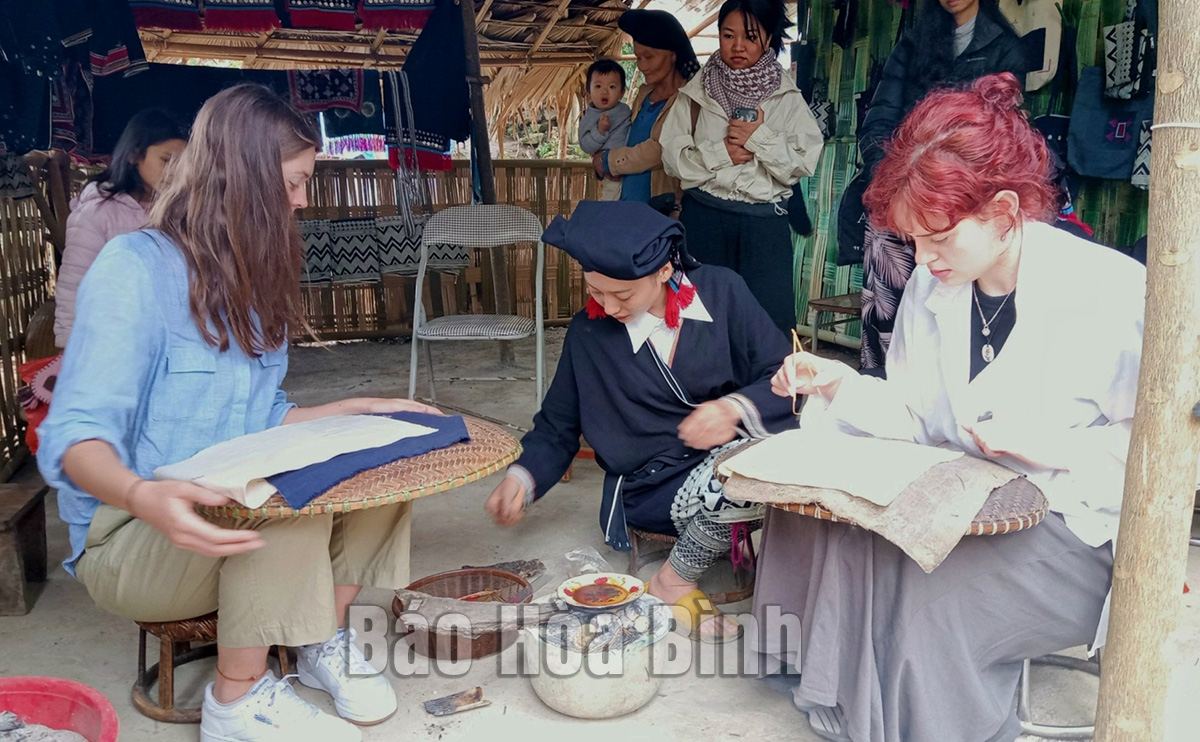
(HBO) – Da Bac district has so far made investment in infrastructure and implemented various measures to promote the growth of local tourism.

Dao village in Sung hamlet of Cao Son commune (Da Bac district) is attractive to domestic and international visitors.
The district is endowed with wild and staggering natural landscapes and houses five ethnic groups. These mean unique cultural features favorable for the development of community-based tourism. Included in the master planning for the Hoa Binh Lake National Tourist Area, Da Bac promises to be an ideal destination in the future.
Understanding such great potential, Da Bac has made efforts to develop tourism into a spearhead economy. The local Party Committee and People's Committee have so far issued many important documents, like Resolution No. 09-NQ/HU, dated February 6, 2015 on developing the sector for 2015 – 2020, with orientations to 2030 as well as a tourism development project toward 2020, with a vision to 2030. The authorities have also organised investment promotion and attraction programmes; established a Steering Committee for Tourism Development; devised the investment planning for related infrastructure, tours, and routes.
A number of local community-based tourism sites, like the hamlets of Sung, Ke, and Da Bia have been listed in the map of Vietnam’s tourist destinations, with Da Bac’s tourism recovering well post pandemic.
Currently, five tourism projects in the district have been approved by the provincial People's Committee and are being implemented, and seven projects have undergone preliminary investment appraisal.
Nguyen Van Toan, head of the Da Bac division of culture and information, stated that currently, the district is developing homestay tourism in Sung, Da Bia, and Ke. So far this year, the number of visitors to the district has been on the rise, especially during the National Reunification Day (April 30) and May Day holidays when almost all local accommodations and homestays were fully booked.
Toan emphasided that according to the planning of the Government and the Hoa Binh province, Da Bac will work on promoting tourism in the Hoa Binh Lake area.
The district has thus far implemented numerous solutions. Among them, there is a special focus on investing in transportation infrastructure, such as a project to expand the road from Hien Luong to Tien Phong, which is expected to be completed by 2025. In addition, the district is calling for potential investors serving the local tourism development.
Toan, however, said difficulties remain, hence a need for the authorities’ support for investment in transport and power infrastructure, tourism product investment, and investment attraction./.
A diverse chain of eco-tourism and resort destinations concentrated in Hoa Binh city and the districts of Tan Lac, Da Bac, and Luong Son… Along with the launch of several key high-quality resort tourism projects, these developments have reshaped the landscape and enhanced the appeal of Hoa Binh as a travel destination.
Boasting diverse terrain, a mild climate, and rich natural resources, Cao Phong district is increasingly asserting its place on Vietnam’s tourism map, attracting both domestic and foreign visitors. The district is renowned for its stunning landscapes, majestic mountains, a crystal-clear hydropower lake, and the unique cultural identity of local ethnic groups.
With its pristine landscapes, unique cultural heritage of Muong ethnic minority, and an expanding range of visitor experiences, Tan Lac district of Hoa Binh has fast become a captivating destination for both domestic and international tourists.
Until now, Sung village in Cao Son commune, Da Bac district remains the only Dao ethnic community in Hoa Binh province to develop a community-based tourism model. Beyond its untouched natural landscapes, cultural identity serves as the cornerstone attraction for visitors.
Alongside the diverse cultural identities of the Kinh, Muong, Tay, Thai, Dao, and Mong ethnic people, Hoa Binh province is also renowned as the "capital" of the northwestern Vietnamese cuisine, offering unique and distinctive dishes. At festivals, during Lunar New Year (Tet), or on significant family or community occasions, special dishes are prepared, leaving a lasting impression on visitors.
A Phong Linh (Yellow Tabebuia) flower garden in Thang village, Thach Yen commune, Cao Phong district is currently in full bloom, drawing a large number of visitors.



